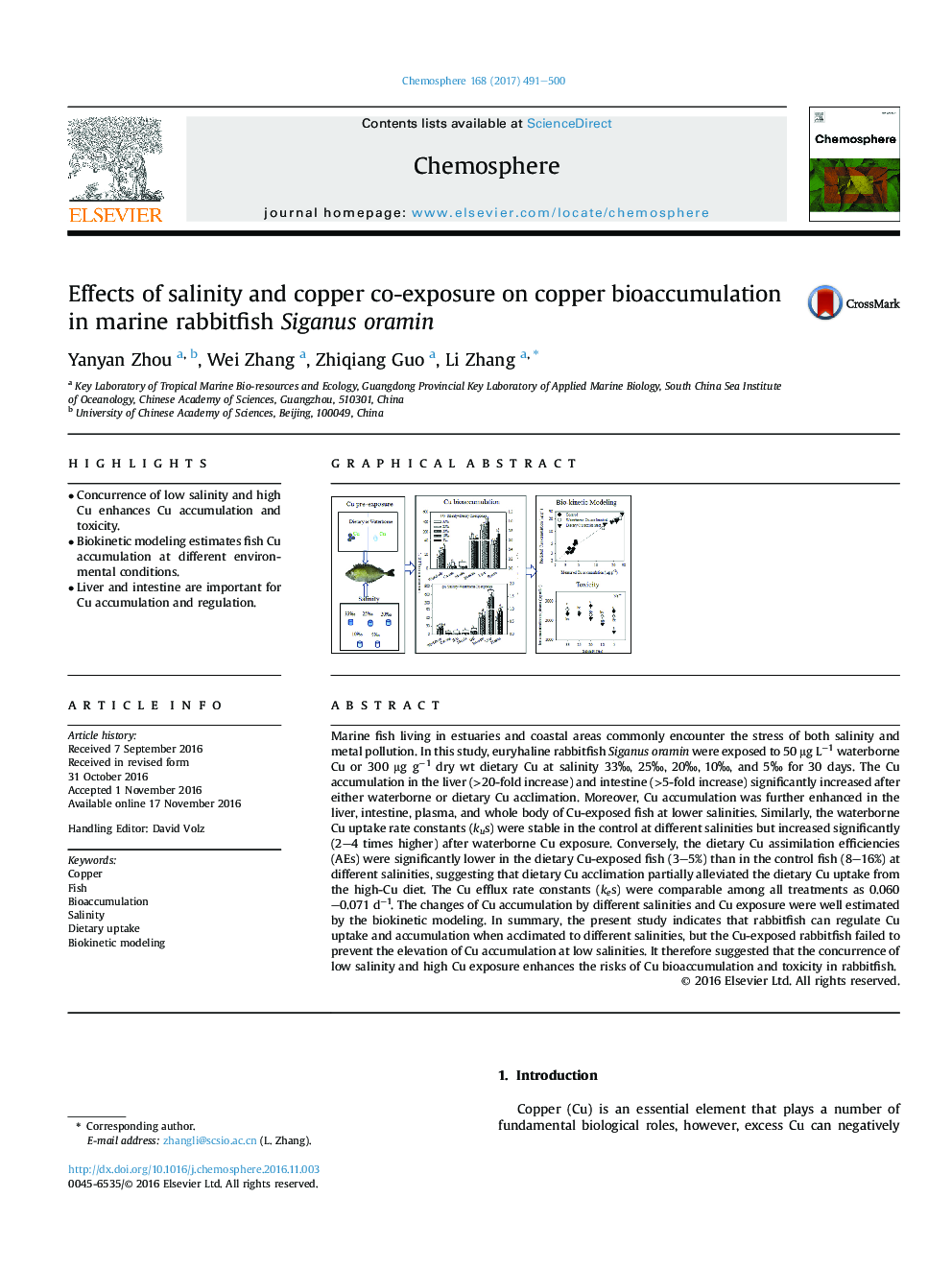| Article ID | Journal | Published Year | Pages | File Type |
|---|---|---|---|---|
| 5746666 | Chemosphere | 2017 | 10 Pages |
â¢Concurrence of low salinity and high Cu enhances Cu accumulation and toxicity.â¢Biokinetic modeling estimates fish Cu accumulation at different environmental conditions.â¢Liver and intestine are important for Cu accumulation and regulation.
Marine fish living in estuaries and coastal areas commonly encounter the stress of both salinity and metal pollution. In this study, euryhaline rabbitfish Siganus oramin were exposed to 50 μg Lâ1 waterborne Cu or 300 μg gâ1 dry wt dietary Cu at salinity 33â°, 25â°, 20â°, 10â°, and 5â° for 30 days. The Cu accumulation in the liver (>20-fold increase) and intestine (>5-fold increase) significantly increased after either waterborne or dietary Cu acclimation. Moreover, Cu accumulation was further enhanced in the liver, intestine, plasma, and whole body of Cu-exposed fish at lower salinities. Similarly, the waterborne Cu uptake rate constants (kus) were stable in the control at different salinities but increased significantly (2-4 times higher) after waterborne Cu exposure. Conversely, the dietary Cu assimilation efficiencies (AEs) were significantly lower in the dietary Cu-exposed fish (3-5%) than in the control fish (8-16%) at different salinities, suggesting that dietary Cu acclimation partially alleviated the dietary Cu uptake from the high-Cu diet. The Cu efflux rate constants (kes) were comparable among all treatments as 0.060-0.071 dâ1. The changes of Cu accumulation by different salinities and Cu exposure were well estimated by the biokinetic modeling. In summary, the present study indicates that rabbitfish can regulate Cu uptake and accumulation when acclimated to different salinities, but the Cu-exposed rabbitfish failed to prevent the elevation of Cu accumulation at low salinities. It therefore suggested that the concurrence of low salinity and high Cu exposure enhances the risks of Cu bioaccumulation and toxicity in rabbitfish.
Graphical abstractDownload high-res image (262KB)Download full-size image
